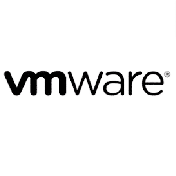Seminarinhalt
This course covers HPE OneView management features for HPE ProLiant DL/ML servers with a focus on HPE OneView functionality. During the course, you learn how to deploy, configure, and use HPE OneView to manage HPE ProLiant DL/ML servers. You also discover how to manage storage components, how to configure security, and how to perform basic troubleshooting. In addition, you find out how to use the HPE OneView Global Dashboard to monitor resources from several HPE OneView management instances. Animated demos and hands-on practice labs in a simulated HPE OneView environment are included to help you better understand and retain HPE OneView knowledge.
Course objectives
After completing this course, you should be able to:
Course objectives
After completing this course, you should be able to:
- Describe HPE OneView features and integration points
- Describe components supported in HPE OneView and licensing options
- Explain the HPE OneView installation, deployment, and initial configuration process
- Explain management features available for HPE ProLiant servers including:
- – Storage management
- – Server profile management
- – Maintenance and support
- – Reporting functionality
- – Security management
- – Data center management
- Use the HPE OneView Global Dashboard to view devices managed and monitored by multiple HPE OneView appliances
Programm
Module 1: Introduction
Module 2: HPE OneView Appliance Installation and Configuration:
Module 3: Configuring Storage for HPE ProLian DL/MS Servers
Module 4: Server and Profile Management
Module 5: HPE OneView Maintenance and Support
Module 6: Data Center Management and HPE OneView Global Dashboard
- Introduction
- HPE OneView features
- Packaging model and licensing
- Learning check
- UI experience
- What to expect in this course
Module 2: HPE OneView Appliance Installation and Configuration:
- Deploying the HPE OneView appliance
- Hardware deployment environments
- HPE OneView initial setup
- Learning check
- Exercise - Adding an SPP to HPE OneView
Module 3: Configuring Storage for HPE ProLian DL/MS Servers
- HPE One View configuration flow
- Supported storage components in HPE OneView Creating fibre channel networks
- Adding SAN management
- SAN states and network association
- Adding managed storage systems
- Managing storage pools
- Creating volume templates and volumes
- SAN volume snapshots
- SAN storage provisioning for HPE ProLiant DL/ ML Servers
- Exercise - Managing and configuring storage components in HPE OneView
Module 4: Server and Profile Management
- Adding an HPE ProLiant server to HPE OneView
- Preparing a server profile template for an HPE ProLiant DL/ML Server
- Creating a server profile template for an HPE ProLiant DL/ML Server
- Working with server profiles
- Exercise - Adding HPE ProLiant servers to HPE OneView
- Exercise - Working with server profile templates and server profiles
- Exercise - Updating HPE ProLiant firmware using HPE OneView
- Learning check
Module 5: HPE OneView Maintenance and Support
- Support dump
- HPE OneView backup
- Exercise - Creating a support dumb and backing up HPE OneView
- HPE Remote Support
- Refresh procedure
- Maintenance mode
- HPE OneView reports
- Exercise Working with HPE OneView reports and activity feed
- HPE OneView security
- Scope-based access control
- Two-factor authentication
- Certificate management
- HPE OneView PowerShell interface
- Exercise - Configure security in HPE OneView
- Learning check
Module 6: Data Center Management and HPE OneView Global Dashboard
- Data centers in HPE OneView
- Racks in HPE OneView
- Power delivery devices in HPE OneView
- Disablement of older TLS protocol versions
- Unmanaged devices in HPE OneView
- Exercise - Configuring data center components
- HPE OneView Global Dashboard
- Exercise - Using HPE OneView Global Dashboard
Zielgruppen
This course is ideal for customers who have purchased HPE ProLiant DL/ML servers and want to manage them using HPE OneView
Vorkenntnisse
Before attending this course, you should have a basic understanding of system and network administration, as well as an understanding of HPE ProLiant servers.


